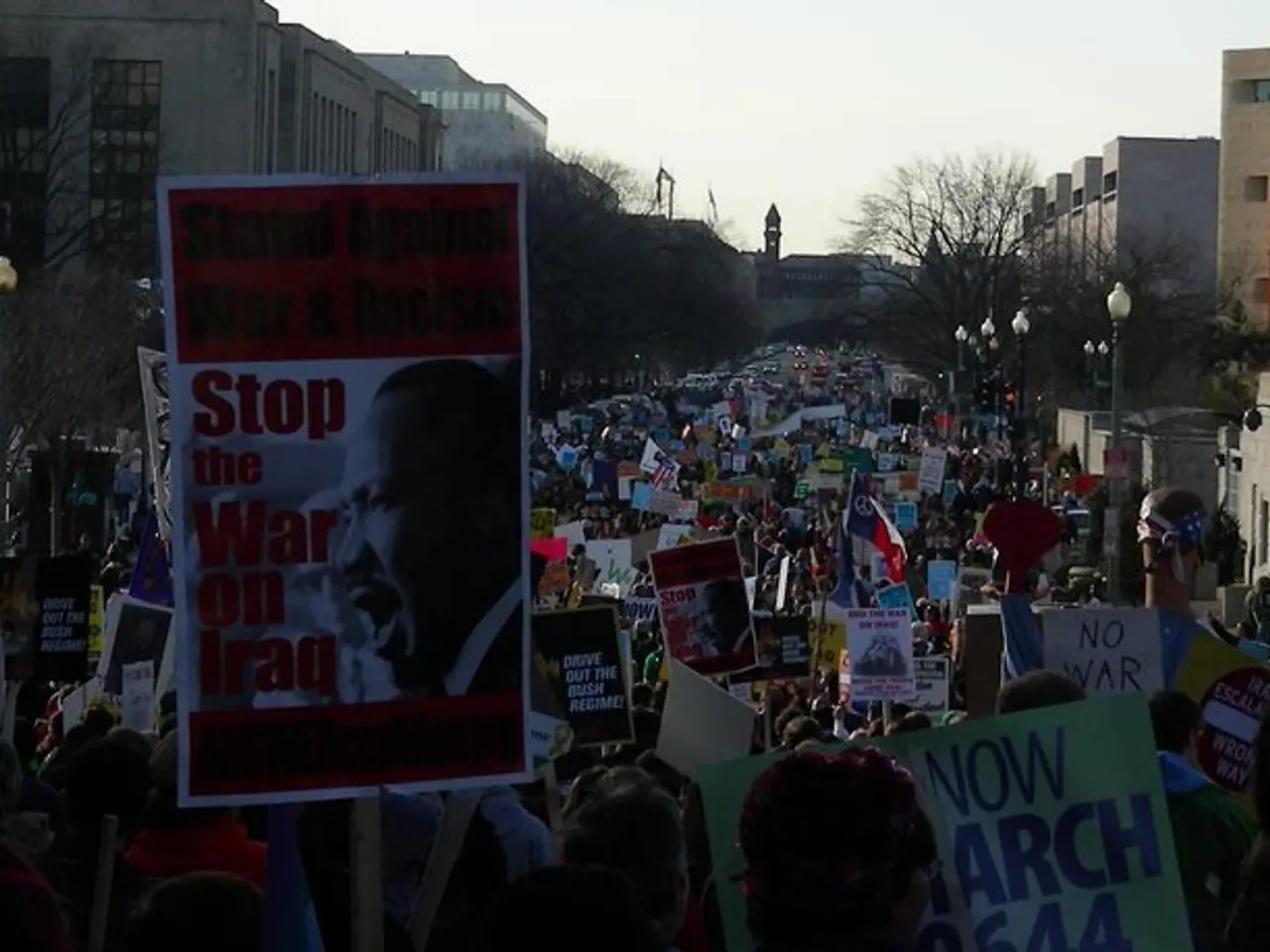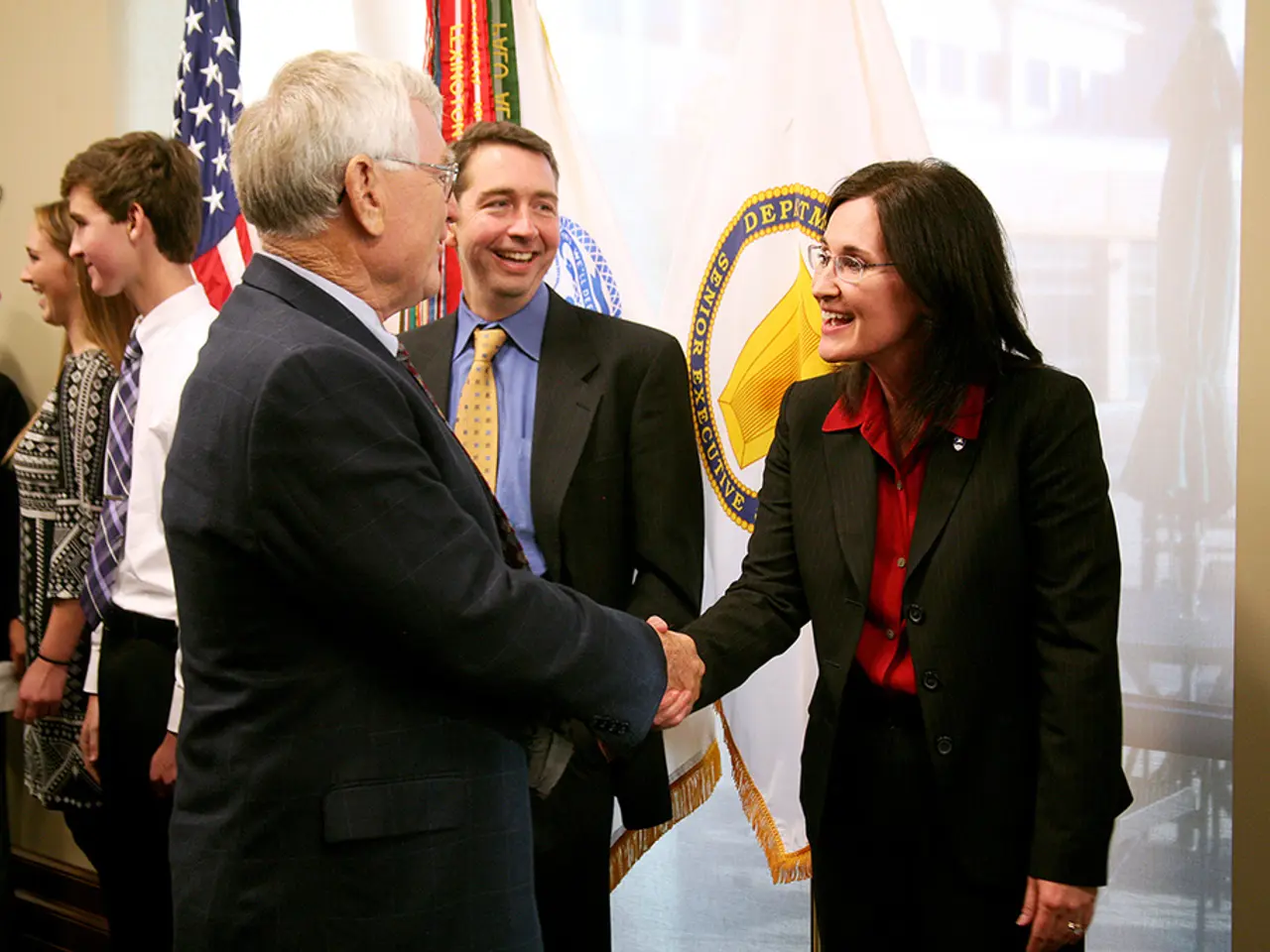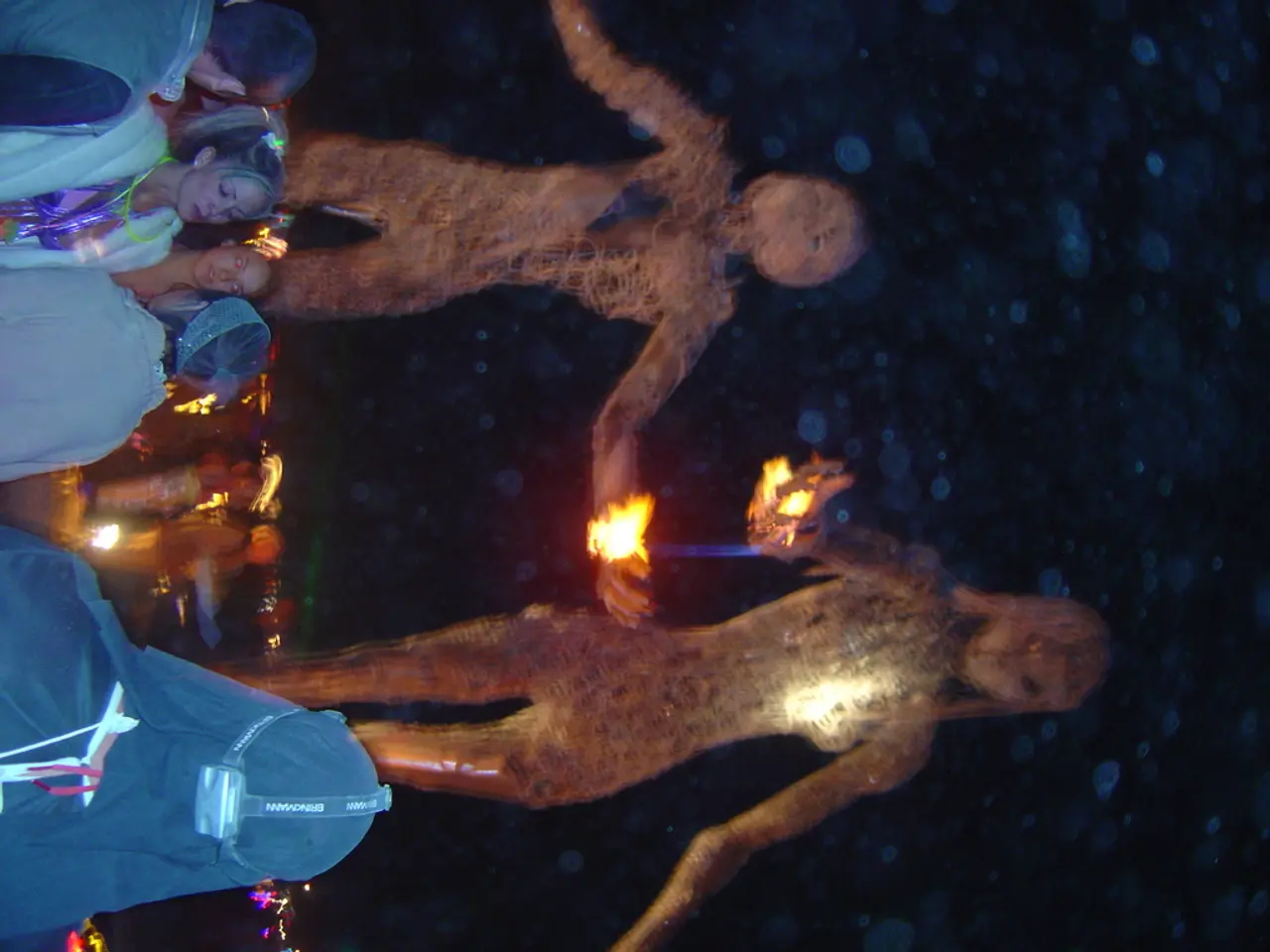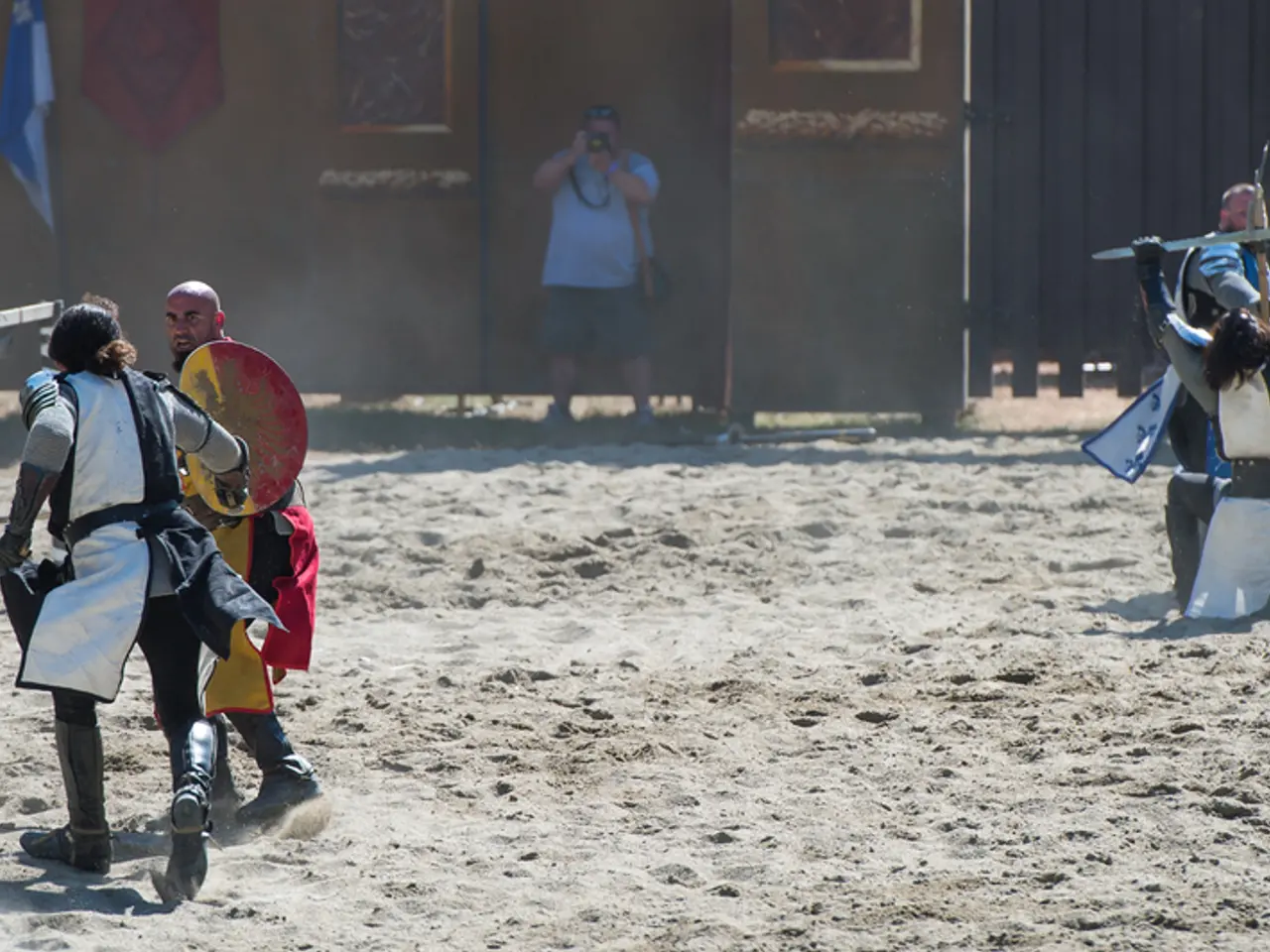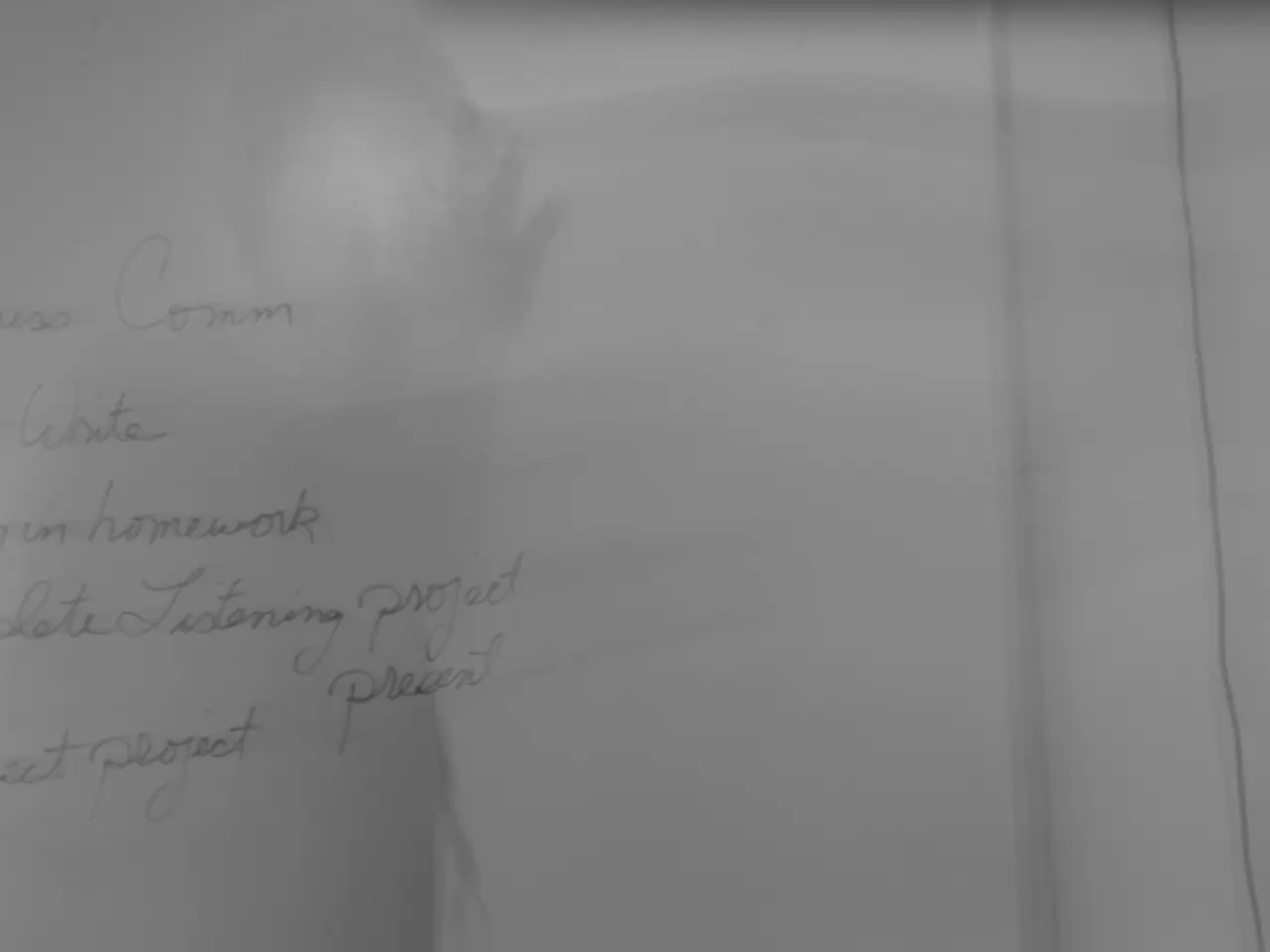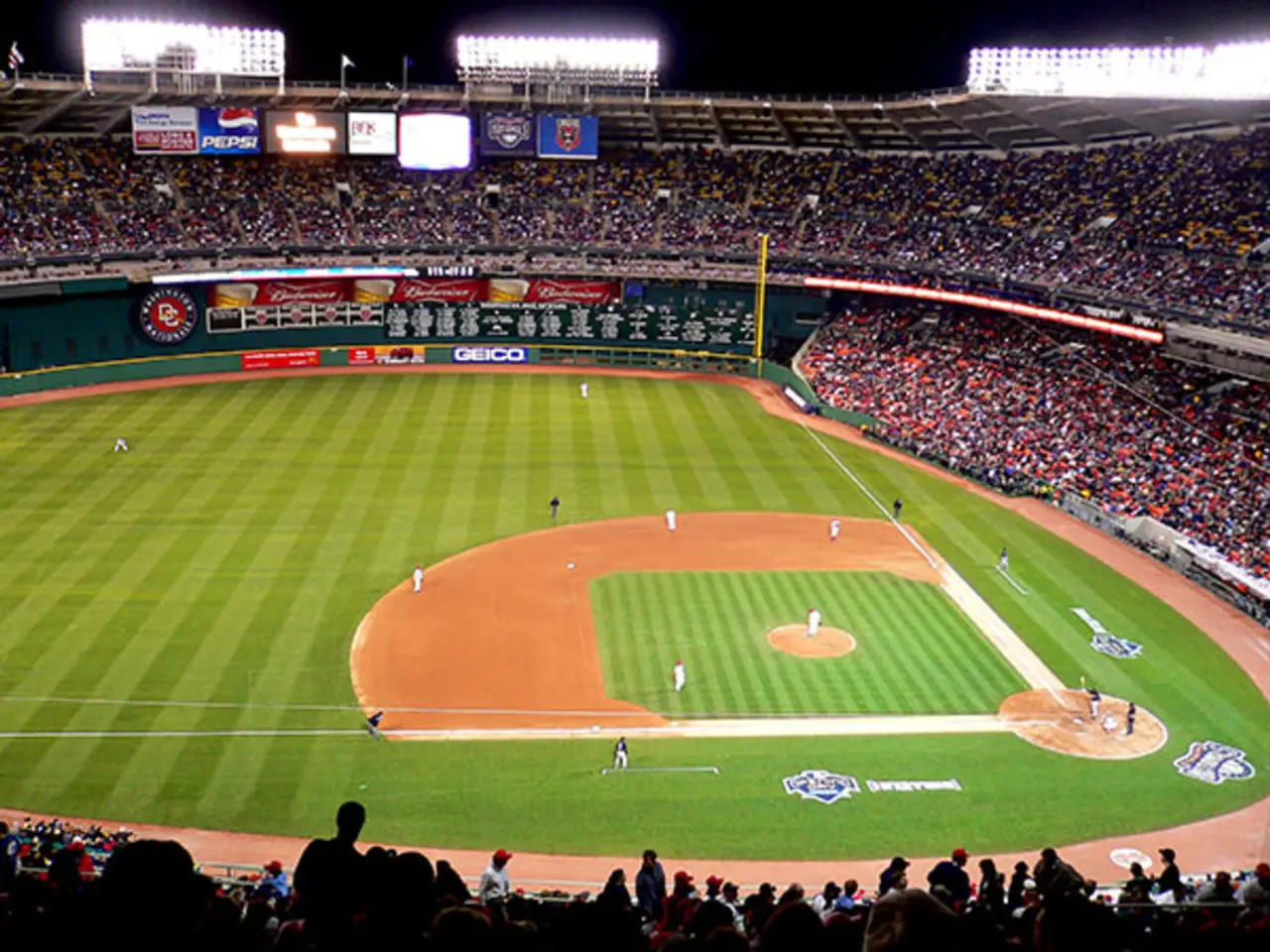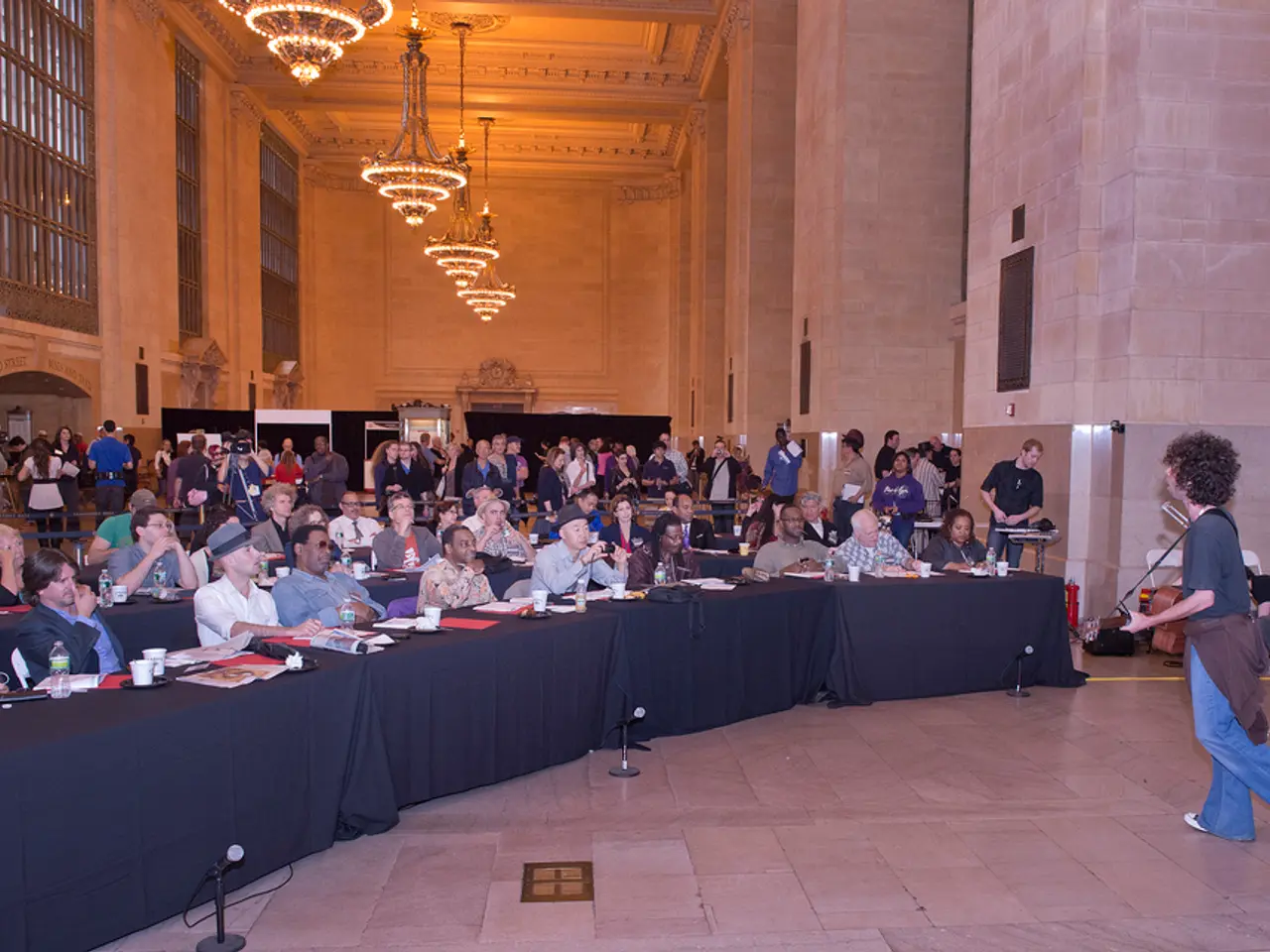Demonstrators obstruct numerous roadways across Serbia
In the heart of Eastern Europe, the streets of Serbia have been echoing with calls for change, as tens of thousands of citizens have taken to the streets for over eight months, demanding political reform and early elections. The catalyst for this revolution for democracy was the tragic collapse of the Novi Sad railway station canopy on November 1, 2024, which claimed 16 lives and highlighted the deep-seated issues of corruption and poor governance in the country.
The Novi Sad disaster, widely blamed on corruption and poor construction standards, was a stark reminder of the authoritarian nature of Aleksandar Vučić's government, accused of corruption and voter manipulation. This government, which has controlled the media, judiciary, and police since 2012, has been a source of public outrage, particularly after the December 2023 parliamentary elections.
The student movement and various social classes have united against what they perceive as a regime lacking democratic legitimacy and transparency. The primary demand of the protesters is for early (snap) parliamentary elections to replace the current government. Calls for an end to corruption and greater political accountability dominate the movement. Some protesters and activists have urged citizens to “take freedom into their own hands,” signalling a push for systemic change beyond just elections.
The protests represent a wider demand for democracy and justice, not only responding to the tragedy but addressing a broader crisis in governance. Traffic in Belgrade, Novi Sad, and other cities is being paralyzed by the use of sit-ins, trash cans, and other barriers, predominantly by students. The situation remains tense, with ongoing demonstrations and demands for fundamental political reform continuing to challenge the current regime.
President Vučić, however, remains defiant, rejecting calls for early elections and accusing the protests of being orchestrated by foreign actors. Despite the pressure, he has managed to weather the storm, with the government seeing some shifts, including the resignation of the prime minister and a cabinet reshuffle. Yet, protesters deem these insufficient.
The movement is broad-based, with students, farmers, and various social groups united. Nationalist voices have also appeared among the protest speakers, reflecting complex social dynamics but a shared goal of change. Recently, students in Serbia gave President Vučić an ultimatum and called for "civil disobedience" after its expiration.
The train station collapse in Novi Sad has been a significant factor in triggering the ongoing protests in Serbia. Serbian media reported numerous arrests during the protests, with over a dozen people detained. Despite President Vučić's repeated descriptions of the protests as foreign-backed, opposition figures in Serbia continue to face smear campaigns, intimidation by state institutions, and attacks by thugs.
The protests in Serbia are ongoing and escalating, with no clear resolution in sight. President Vučić has announced that the next parliamentary elections will not be held earlier than late 2026. The protesters, however, are undeterred, vowing to continue their fight for democracy and justice until their demands are met.
- The Novi Sad disaster, sparking calls for an end to corruption and greater political accountability, has escalated the ongoing protests in Serbia, which are now addressing a broader crisis in governance and demanding snap parliamentary elections.
- Amidst ongoing protests, President Vučić's government, accused of corruption and voter manipulation, has faced a broad-based movement, with students, farmers, and various social groups united, even as nationalist voices reflect complex social dynamics but a shared goal of change.
